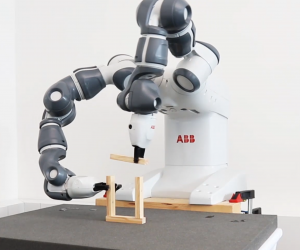Robotic stacking of parcels in containers and roll cages
Status
This project started in 2019 and has been successfully completed in 2022.
Researchers
Prof. Stelian Coros (ETH)
Dr. Roi Poranne (ETH)
Industry partner
Die Post
Description
Problem statement: The employees of Swiss Post do a great amount of manual work to load and
unload parcels in containers. The unloading process can be automated mechanically (e.g. by tilting
the roll cages), but an acceptable level of filling by the loading process cannot be achieved through a
mechanical solution: parcels must be intelligently stacked in order to optimize the volume transported.
A robot could do this work, but the current technologies are based on a process in which every item to
stack is known in advance. In the postal industry, it is impossible to know which item is coming next,
although some properties of each item are known (e.g. size and weight). This project will focus on the
development of an intelligent robotic system capable of loading containers and roll cages using low to
no buffer.
Basic research: Solving the problem stated above requires intelligent robots that know
how to dynamically manipulate rigid boxes. This task requires specialized motion planning algorithms
for 1) robust grasping and 2) collision-free trajectories to efficiently move boxes from the conveyor belt
to their final location in the container. Both sub-tasks must take into account the workspace of the
robot. For example, if reachability is somewhat limited, then the boxes could be tossed gently, or
placed down and pushed into their final spot. Such strategies, which are often employed by human
workers, require robots to poses a deep understanding of contacts and friction, dynamics, robustness
against unanticipated perturbations, dynamic regrasping strategies, etc. The ultimate goal of this PhD
thesis is to endow robots with human-level skill when it comes to loading parcels.
Technical foundations that the CRL group will contribute to:
1. Physics-based simulation models that will let robots understand and predict the physical
implication of their actions.
2. A differentiable simulator as the technical foundation for trajectory optimization algorithms that
will generate dynamic motion plans.
3. Robotic tele-operation as the means to learn complex motion skills from demonstrations.

